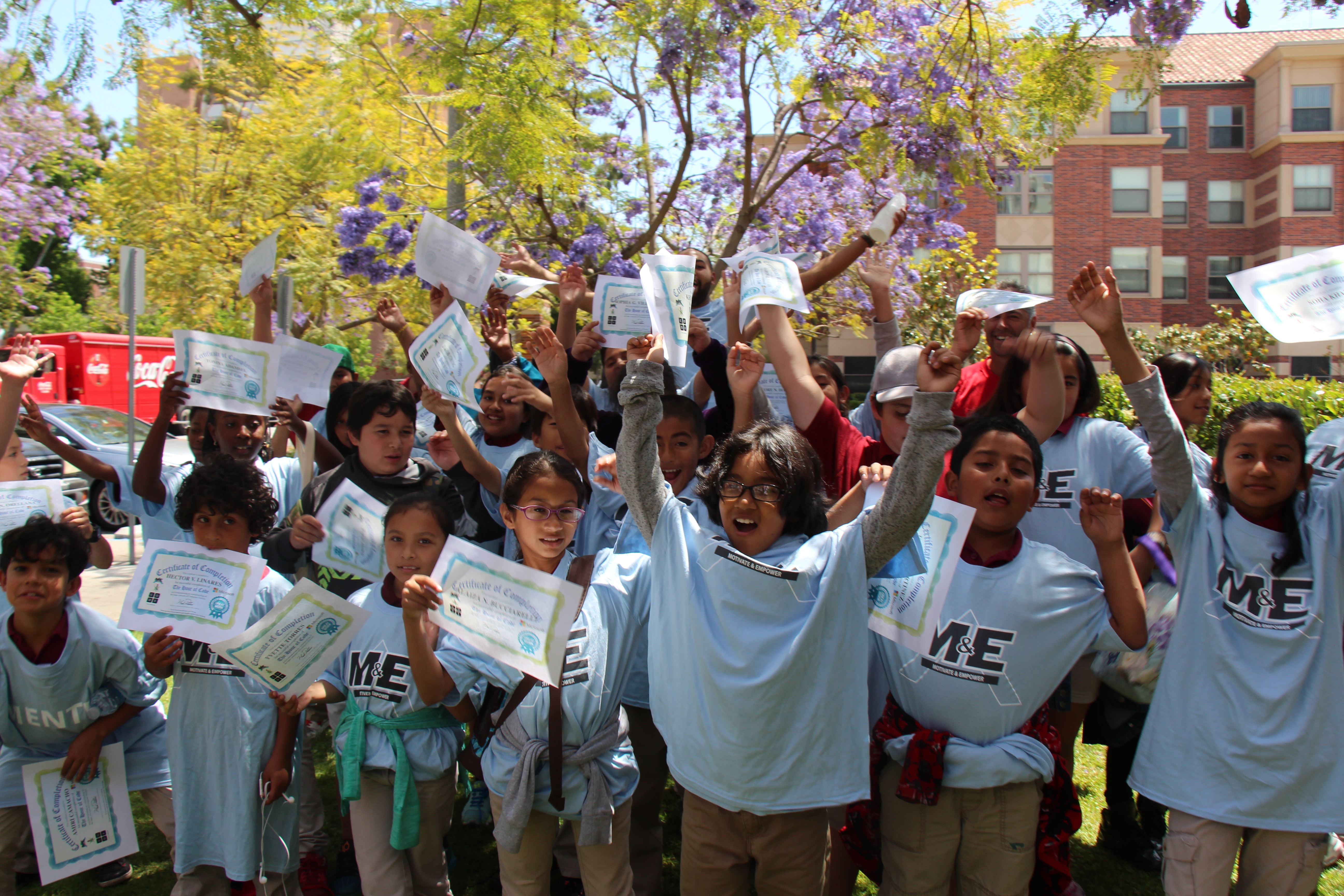Viterbi hosts STEM program to mentor local kids in coding

Photo courtesy of Closing the Gap
STEMming insecurities · Closing the Gap helps many historically underrepresented students from local schools experience coding at USC.
The USC Viterbi School of Engineering is collaborating with several organizations to give 300 elementary and middle school students the opportunity to experience STEM at USC, learn coding and meet with Viterbi students.
The Viterbi Adopt-a-School and Adopt-a-Teacher programs will partner with the National Society of Black Engineers, Project Launch and the mentorship program Motivate and Empower. The event, titled “Closing the Gap: Technology,” will last from 9 a.m. to 3 p.m. in the Engineering Quad and will include tours of the campus. Participating schools include the 32nd Street School, 75th Street School and Willowbrook Middle School in Compton.
The goal of the event, which is the first in a series launched by Motivate and Empower, is to engage local students and spark their interest in the STEM subjects as viable and exciting fields of study.
“Closing the Gap to us means closing the gap in opportunity, achievement and resources within the local community,” said Maya Carter, founder of Motivate and Empower. “We want to engage students who may have thought the technology field was not for them. We want to show them that they can have any career that they work toward and that we will support them.”
According to Katie Mills, VAST’s K-12 STEM outreach administrator, the USC Viterbi Spotlight on Biomedical Engineering initiative will be present at the event. Professors in the biomedical engineering department will show students around USC’s labs, where they will see researchers working to find cures for cancer and examining heart cells, among other activities.
“The purpose of our Spotlight events is to show kids what cool things they can do if they stick with their math and science courses,” Mills said. “When they can sit down with people who are a few years older than them … who are doing research on cancer and heart disease, it is a way for them to build self-efficacy and their ability to see themselves as being able to do this too.”
Carter emphasized that many of the students in local schools have been historically underrepresented in the STEM fields, a fact that needs to change.
“We want every student that we work with to have the confidence and the resources they need to be successful in any career,” Carter said. “We want to make sure that we work with our local community, because a lot of the communities around USC haven’t had the opportunity to be on the cutting edge of new industries. We want to give them the opportunity to grow as a community.”
For Christin Carter, the pre-college initiative chair for the National Society of Black Engineers, the STEM subjects gave him that opportunity to grow.
When Christin Carter was in middle school, he struggled in many of his classes. His mother, upset at his grades, enrolled him in a summer program focused on getting kids engaged in STEM. During that program, he realized that he could succeed in a STEM field if he worked hard enough.
Now, he works to inspire kids from low-income communities to dream big and pursue these challenging subjects.
“They don’t tell you about engineering when you’re from a low-income neighborhood. They don’t really tell you about the fun math and science things you can do,” Christin Carter said. “We want kids to know that there are so many opportunities, not just in engineering but in STEM in general.”
Mills noted that the United States is lagging behind other countries in science and math education, and she hopes initiatives like this one will encourage students to take courses in the STEM subjects.
“American students are not keeping up with STEM studies,” Mills said. “There is an urgent need for more adults who are trained in science, technology, engineering and math. We’re trying to get kids excited and raise awareness as to why they should stick with their STEM subjects.”
According to Mills, while there are not currently enough students pursuing careers in STEM, the Los Angeles Unified School District is making an attempt to increase the number of students, especially in communities of color, who go into these fields through its Next Generation Science Standards initiative. These standards were adopted by the California State Board of Education in September 2013 and provide a new framework for K-12 science education.
“There are some really important shifts happening statewide and across the nation,” Mills said. “The new guidelines, called the Next Generation Science Standards, encourage hands-on, project-based learning that I think is going to engage students in a much better way.”
Christin Carter said that the most rewarding aspect of the program is watching kids become engrossed in learning, realizing that they too have the potential to become a researcher or scientist.
“The best part is seeing kids realize the potential they have within themselves,” Christin Carter said. “When you see them realize that they can do algebra or they can complete that science project or they actually like to make lava volcanoes — it’s a beautiful thing. There’s nothing better than seeing a child who loves education and is hungry to learn more.”
